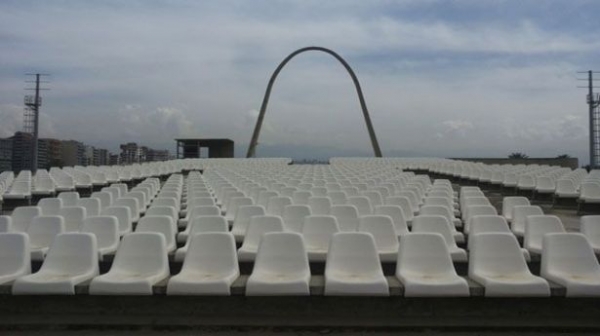Rashid Karami International Fair : A long-awaited dream
Establishment
Decree-law No. 4027, dated May 4, 1960 stipulated the establishment of the Authority of Lebanon’s Permanent International Fair in Tripoli. The word “authority” was omitted later by virtue of Law No. 30 issued on September 25, 1980, which assigned the Fair the following functions:
- Acquainting people with the resources of Lebanon and other Arab and foreign countries, and keeping traders and industrialists in light of the latest updates in the various production fields.
- Holding conferences and hosting international organizations.
This state institution falls under the control of the Minister of Economy and Trade with the assistance of the government commissioner the minister appoints. It is subject to the posterior supervision of the Audit Court and the financial monitoring of the Central Inspection. Law No. 76, dated August 16, 1991 changed the fair’s name to International Fair of the Late PM Rashid Karami in Tripoli. The name underwent a final amendment by virtue of Law No. 415 on May 15, 1995, and became Tripoli-Lebanon Rashid Karami International Fair.
Management
A board of directors consisting of a Chair and 6 members appointed by a decree for a renewable three-year term are responsible for running the Fair. The members are public figures active in the fields of commerce, industry, agriculture and economy. A Director General is assigned to handle the daily routines and duties of the Fair and to coordinate the work environment. It was agreed that the Director General should be Maronite and the Chair Sunni.
Unaccomplished projects
Well-known international architects laid down an outline for the establishment and development of the Fair, but most of the plans remained ink on paper and only one hotel and a few aesthetic structures designed by the Brazilian architect Oscar Niemeyer materialized. The government tried to improve the Fair in 1995 by awarding it exceptional rights to hold international exhibitions, but its decision failed to take shape. The idea of using the property to host a permanent three-year fair of Chinese products in order to provide income and over 4000 job opportunities was just another attempt that the government failed to execute. The Fair’s revenues are as small as LBP 500 million while its expenses exceed LBP 1.5 billion to cover the overheads and salaries of 20 personnel. For how long will the government continue to stall in putting the plans into action, before the dream of the north can actually come true? Can we really speak of an “International Fair” amid the ever-prevalent economic and security strains? And can such a fair operate in the absence of a railroad and a modern transportation network?








Leave A Comment